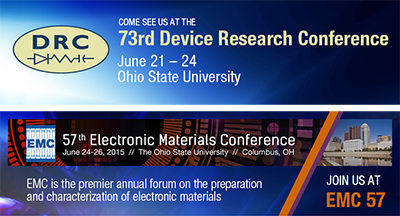
Lake Shore Cryotronics will be discussing probe stations and its Hall effect measurement and THz materials characterization systems at the 73rd Device Research Conference (DRC 2015) and 57th Electronic Materials Conference (EMC) next week at The Ohio State University in Columbus.
Designed for on-wafer probing of device and material samples as a function of temperature and field, Lake Shore probe stations are particularly ideal for CNT, MEMS, GaN, SiGe or superconducting research. Lake Shore offers both cryogen-free CCR and liquid cryogen models in horizontal or vertical field magnet-based configurations with options available for electrical, electro-optical, DC, RF, and microwave probing.
On display in the Lake Shore booth will be the Model TTPX, an affordable, entry-level probe station that supports a wide variety of non-destructive electrical device and material measurements. Accommodating full and partial wafers up to 51 mm (2 in) in diameter, the TTPX provides efficient cryogenic temperature operation and control over a range of 4.2 K to 475 K, with options to extend as low as 3.2 K, or from 20 K to 675 K.
Lake Shore will also be discussing a unique THz-frequency contact probing arm for cryogenic applications. This option, which Lake Shore plans to introduce later this year, will enable precise on-wafer probing of millimeter and sub-millimeter wave devices and materials at THz frequency bands for next-generation electronic device and material R&D.
Also at DRC/EMC, Lake Shore representatives will answer questions about:
- Its Model 8425 DC Hall effect measurement system for non-destructive study of wafer-scale materials in a temperature-controlled, high-vacuum probing environment. It combines the advanced Hall measurement capabilities of the Lake Shore 8400 Series Hall system with the flexibility of its CRX-VF probe station, making it ideal for a number of device and material research applications.
- Other Hall effect systems, including those offering an AC field Hall measurement option for characterizing materials with mobilities down to 0.001 cm2/V s.
- The fully integrated 8500 Series THz system, which uses non-contact THz energy and an integrated high-field cryostat to measure spectroscopic responses across a range of frequencies, temperatures and field strengths. THz wavelengths match the feature sizes of development-grade materials and couple very strongly to the free-carrier motion of a number of these materials.

